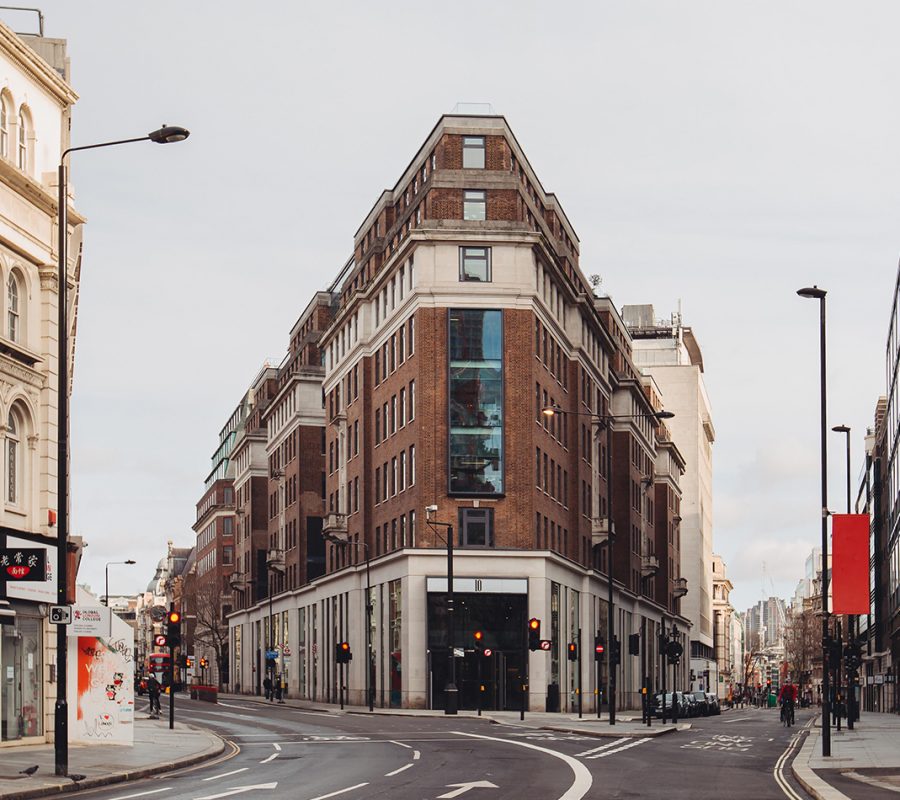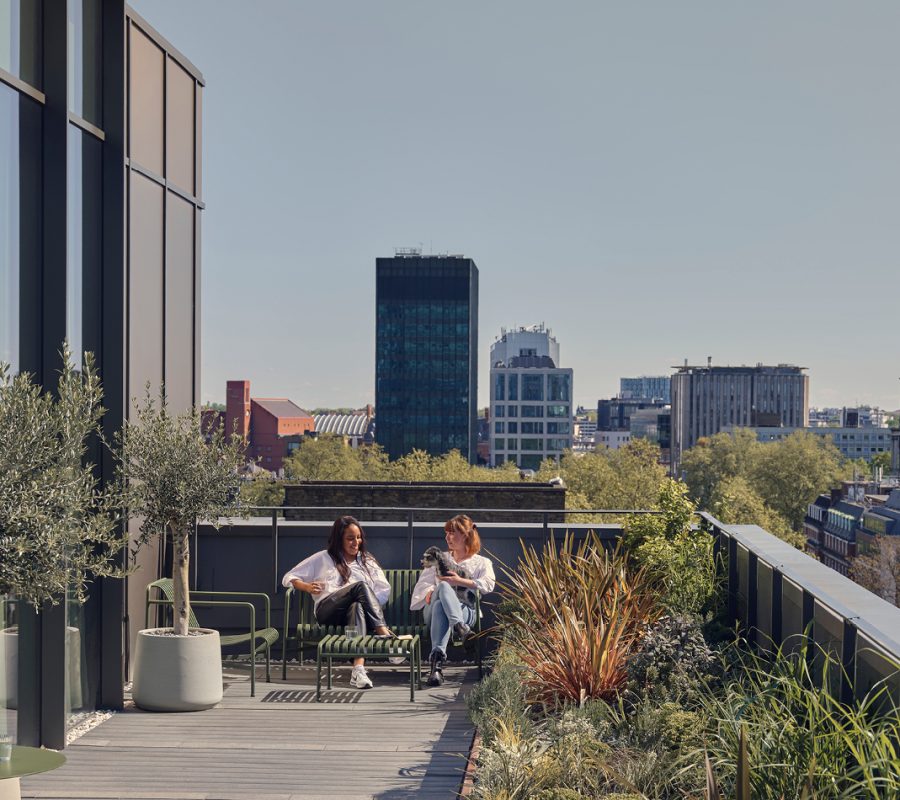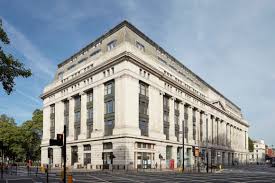Location:Bloomsbury
Bloomsbury Office Space
Office space in Bloomsbury is associated with professional and enlightened firms and entities, sitting within London’s Knowledge Quarter. Distinguished in the 18th century as the UK capital’s seat of ‘knowledge, culture and artistic sensibility’, it has long been the home to many educational institutions such as The British Library, The British Museum, and the Royal College of Physicians.
The Knowledge Quarter now includes Bloomsbury’s neighbouring districts, and new members include modern tech giants such as Google and Meta, who occupy space in Kings Cross.
Occupiers in Bloomsbury
Bloomsbury is the home of the University of London, where its administrative centre and library, Senate House, are based. It also houses many of its independent member institutions, including Birkbeck College, the London School of Hygiene and Tropical Medicine, the School of Oriental and African Studies, the Royal Veterinary College, and University College London.
The district is also home to the Royal Academy of Dramatic Art (RADA), a branch of the University of Law, the Architectural Association School of Architecture, and the London campuses of several American colleges, including the University of California, Florida State University, and New York University.
Opened in 1759, Bloomsbury is home to The British Museum at Montagu House. It displays a collection covering two million years of history that showcases human knowledge in all forms. It was the world’s first public museum and today attracts six and a half million visitors yearly.
At the core of the museum is the space around the former British Library Reading Room, which was filled with the British Library’s concrete storage bunkers. Today, the Queen Elizabeth II Great Court is a large covered central quadrangle. It was redeveloped by architects Foster + Partners in the late 1990s and opened by Queen Elizabeth II in 2000.
Museums in Bloomsbury
In 2015, the British Museum became the world’s largest indoor space on Google Street View. Online visitors can view 80,000 items from their devices, yet this is only 1% of the whole collection.
The Foundling Museum is also based in Bloomsbury, close to Brunswick Square. It stands on the site of the former Foundling Hospital, an orphanage set up by Thomas Coram in the early 18th century, who was horrified by the number of dead, dying and destitute children on London’s streets.
Coram had experienced great difficulty in raising money for his project but was helped by two 18th-century artists. German-born composer George Frideric Handel put on fundraising concerts, even composing a piece especially for the orphanage, and the painter William Hogarth donated paintings and encouraged his contemporaries to do the same, thus creating London’s first public art gallery.
By the time it closed in 1950, it had cared for approximately 25,000 children.
In the 1968 film Oliver!, an adaptation of Charles Dickens’ 19th-century novel Oliver Twist, Bloomsbury is displayed as an oasis of tranquillity and decorum in Victorian London. Bloomsbury Square is where the ‘Who Will Buy’ sequence is set.
Charles Dickens himself came from a poor background and chose to live in Bloomsbury as soon as his means allowed.
He lived at Great Russell Street, Tavistock Square, and 48 Doughty Street, the latter of which is the home of the Dickens Museum today.
Another literary giant associated with the district is Bloomsbury Publishing Plc, publishers of the Harry Potter series, founded in 1986. Its headquarters are at 50 Bedford Square in Bloomsbury, and in 2023, it achieved revenues of approximately £265 million.
The earliest record of the name Bloomsbury is as ‘Blemondisberi’ in 1281. It is named after a member of the Blemund family who held the manor. The family name is believed to derive from Blemont, a place in Vienne, in western France. At the end of the 14th century, Edward III acquired Blemond’s manor and passed it on to the Carthusian monks of the London Charterhouse.
In the 16th century, with the Dissolution of the Monasteries, Henry VIII closed every monastery and nunnery in England and Wales between 1536 and 1541. The Crown took back possession and granted it to Thomas Wriothesley, 1st Earl of Southampton.
Squares in Bloomsbury
In the early 1660s, the Earl of Southampton constructed what eventually became Bloomsbury Square.
The estate passed to the Russell family in the late 17th century following the marriage of William Russell, Lord Russell, to Rachel Wriothesley, heiress of Bloomsbury, co-heiress of Thomas Wriothesley, 4th Earl of Southampton.
The Russell family developed Bloomsbury into a fashionable residential area in the 17th and 18th centuries. It became notable for its garden squares, including Bloomsbury Square, Bedford Square and Russell Square.
The major development of the squares started when Francis Russell, 5th Duke of Bedford, demolished Bedford House and developed the land to the north with Russell Square as its centrepiece. Much is still owned today by the Bedford Estate in trust for the Russell family.
The family sold off portions of their estate in the early 20th century, although they retained certain rights, including being consulted on the design and development of new buildings.
The formal historic boundaries of the combined parish of St Giles in the Fields and St George Bloomsbury include Tottenham Court Road to the west, Torrington Place to the north, the borough boundary to the south and Marchmont Street and Southampton Row to the east.
Today, the eastern boundary of Bloomsbury is sometimes taken further east on Grays Inn Road. The southern extent approximates High Holborn or the thoroughfare formed by New Oxford Street, Bloomsbury Way and Theobalds Road.
Modern Bloomsbury
Today, Bloomsbury is often described as being located in London’s Midtown area, a term first used by the BBC in 2010.
Businesses and organisations from a broad range of sectors choose to rent office space in Bloomsbury. They can choose from a wide variety of leasehold offices in both period buildings and modern buildings that offer state-of-the-art technologies.
There is also a growing number of flexible alternatives to rented office space that cater to shorter-term commitments, with the option to extend terms and expand into larger spaces as business needs dictate.
Also known as flex spaces, these include private serviced offices, managed office suites, and co-working options. Premium workspaces offer first-class business space with five-star amenities such as lounges, coffee bars, relaxation rooms, gyms, and showers.
A significant attraction of these options is the all-inclusive pricing, which means that the one-monthly fee includes rent, utilities, cleaning, furnishings, and other items such as reception, business support, and concierge services.
Occupiers of Bloomsbury office space enjoy excellent transport links with stations such as Chancery Lane, Goodge Street, Euston, Euston Square, Holborn, Kings Cross, Tottenham Court Road, St Pancras and Waren Street, offering underground, rail and international services, all within easy walking distance.
They also enjoy a plethora of world-class amenities, including bars, cafes, restaurants, gyms and shops, hotels such as The Montague on the Gardens and The Bloomsbury Hotel, and entertainment venues such as the Shaftesbury Theatre.



